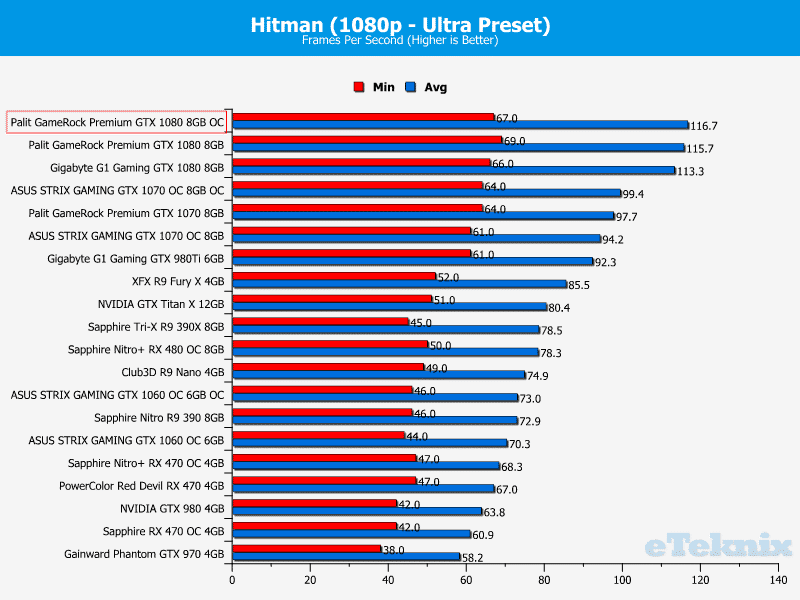Palit GameRock Premium GTX 1080 Graphics Card Review
John Williamson / 8 years ago
Overclocking and Overclocked Performance
Given the dynamic nature of boost clocks on modern graphics cards, I decided to implement a new process displaying the average clock speeds before and after manually overclocking. This allows the end-user to see the real-world performance as the specification posted on the manufacturer’s website or packaging isn’t reflective of what you’ll experience.
Furthermore, any sporadic dips in the boost clock can be investigated because it will make a large impact on the smoothness and overall performance. As you can see by the screenshot below, the Palit GameRock Premium GTX 1080 outputted an average boost clock of 1995.1MHz and 1314.6MHz memory clock with a voltage of 1.0356 V. I was slightly disappointed by the product’s inability to maintain over 2000MHz as there are many instances when it surpasses this figure. Nevertheless, it’s a very good factory overclock boost.
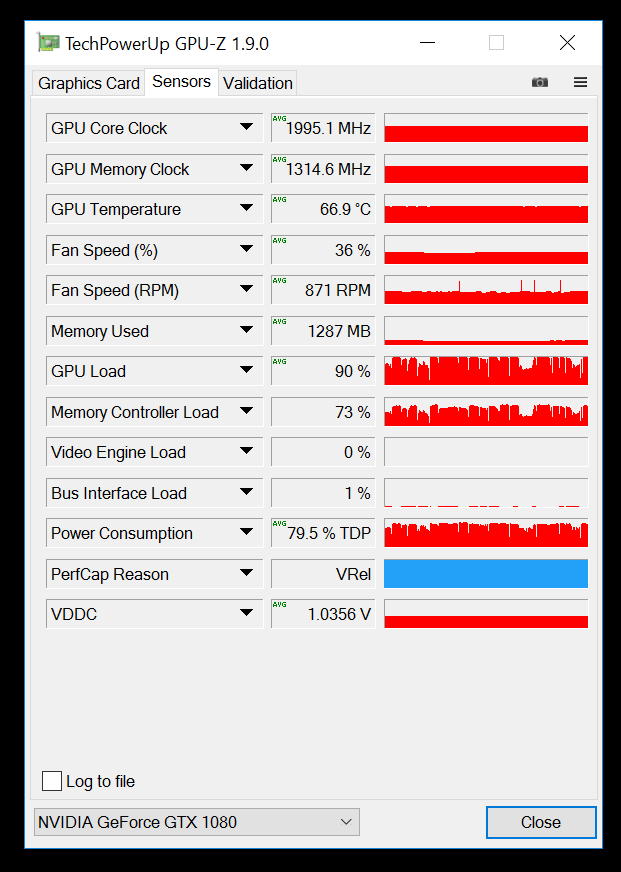
Palit’s ThunderMaster overclocking utility is fairly barebones and the user-interface pales in comparison to MSI Afterburner. Despite this, it’s functional and has enough options to find the maximum potential of your graphics card. While employing the MasterMode, I managed to increase the GPU clock offset by 167MHz, and the memory by 418MHz. Please note, a 120% power target was set with the maximum allowed voltage. Overall, a good boost over the already high factory overclock.
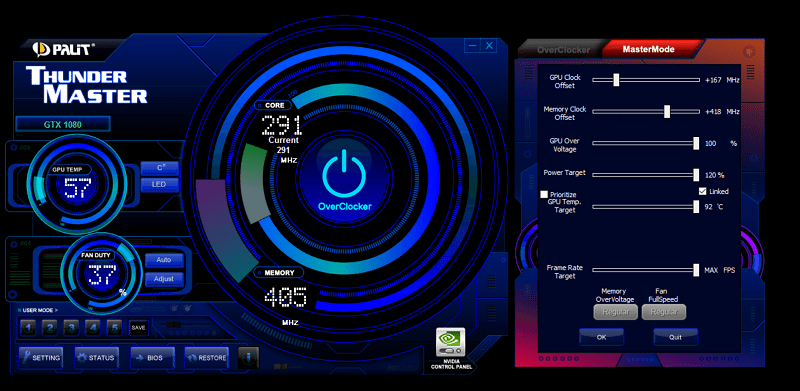
Once overclocked, the average boost clock dramatically improved to 2088.6MHz while the memory operated at 1417.5MHz. Even though some users have managed above 2100MHz, it’s something I haven’t seen very often and anything above 2040MHz deserves credit.
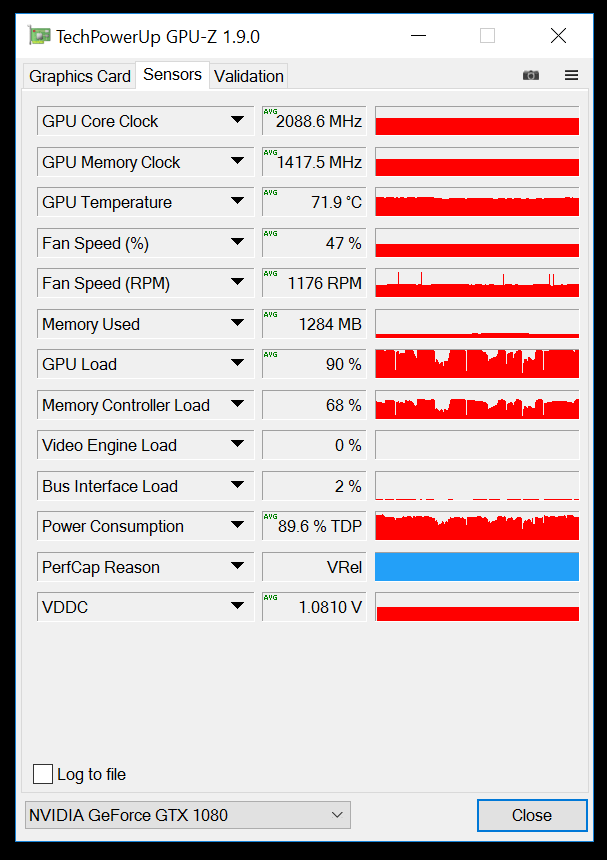
Here is the screenshot comparing the default factory overclock and manual boost:
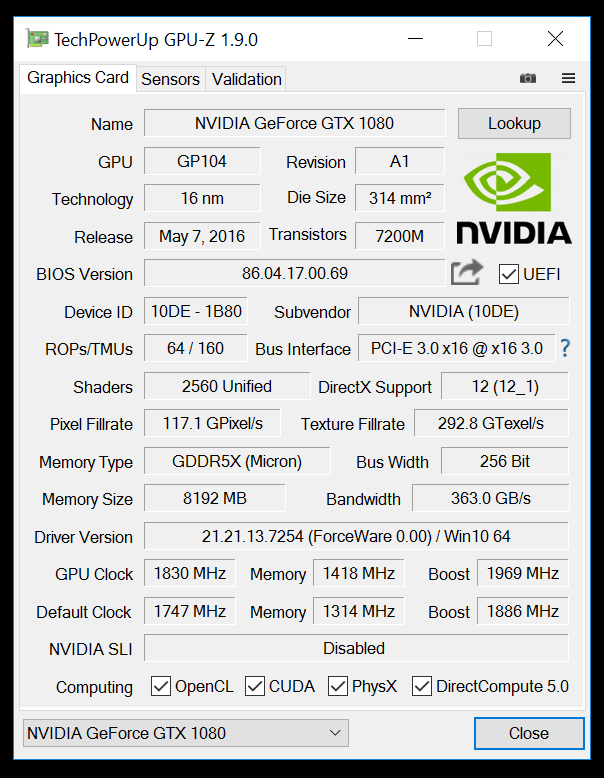
Doom
In Doom, the overclocked graphics card excelled and teetered towards the maximum frame-rate supported by the game’s engine. This is a monumental improvement but it’s to be expected given the rapidly changing frame-rate.
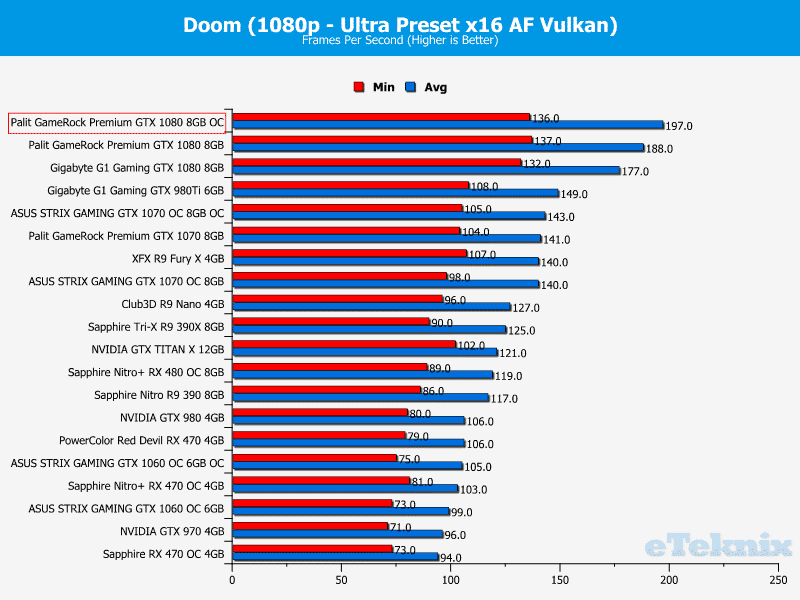
Far Cry Primal
The frame-rate gain when testing Far Cry Primal wasn’t as impressive but the increase was enough to top the charts.
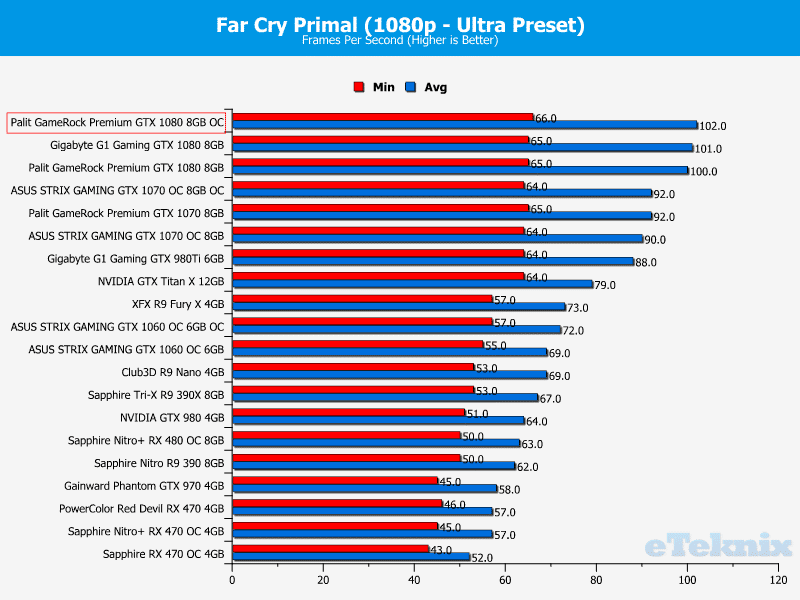
Hitman
During the Hitman benchmark, the graphics card’s frame-rate increased by 1 frame after the overclock was applied. Bizarrely, the minimum frame-rate was lower, but it’s within an acceptable margin of error.
